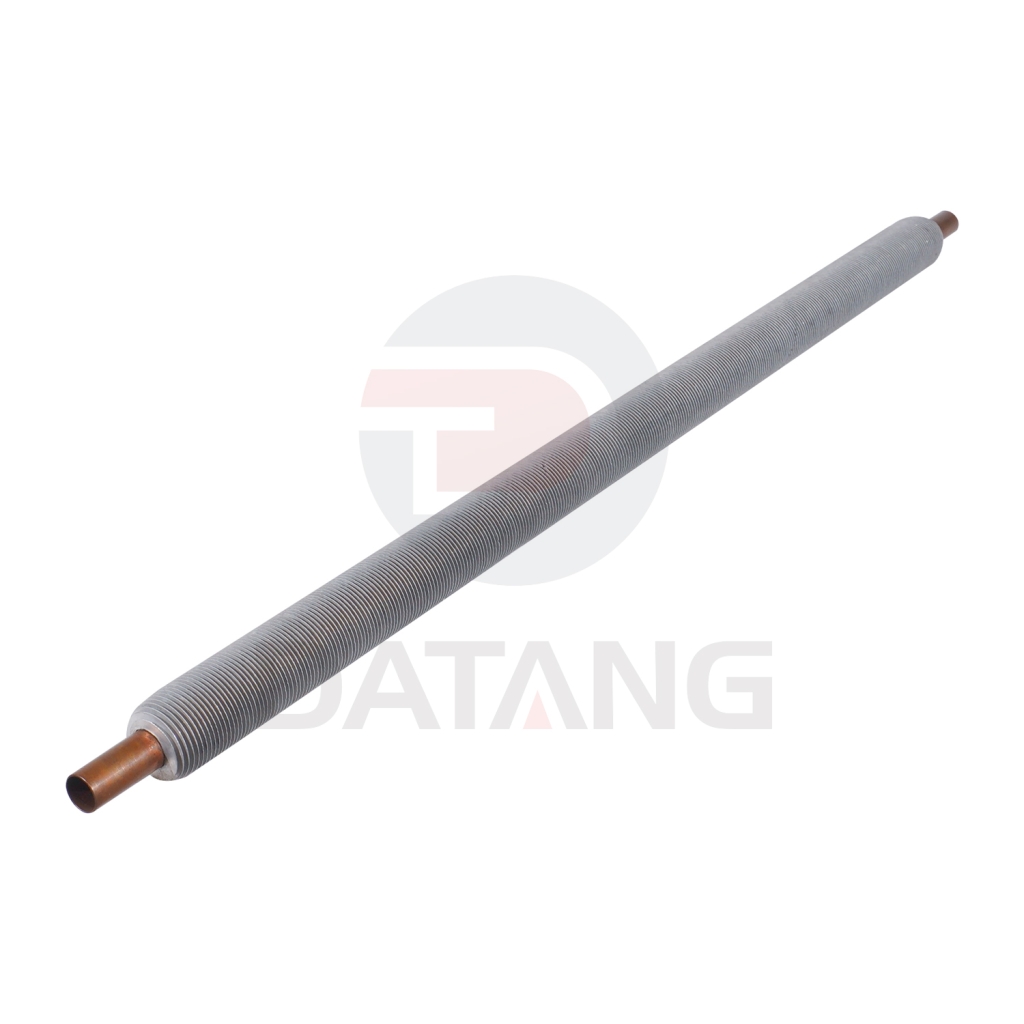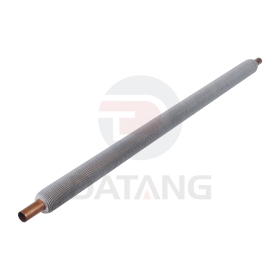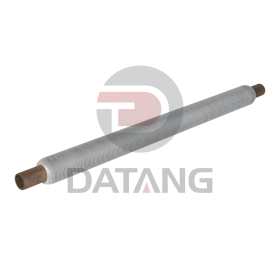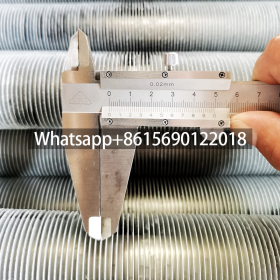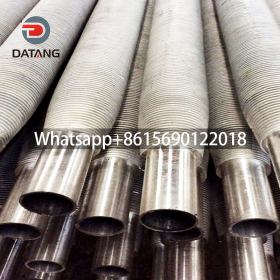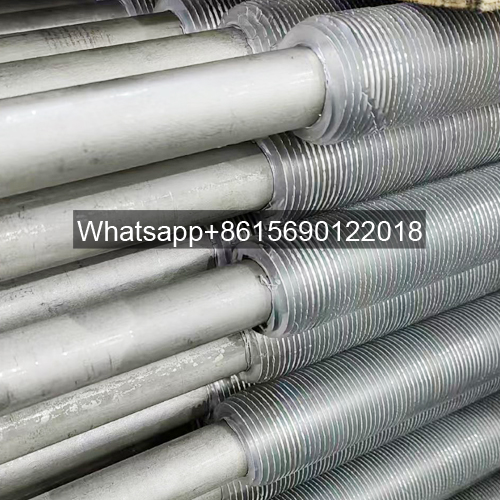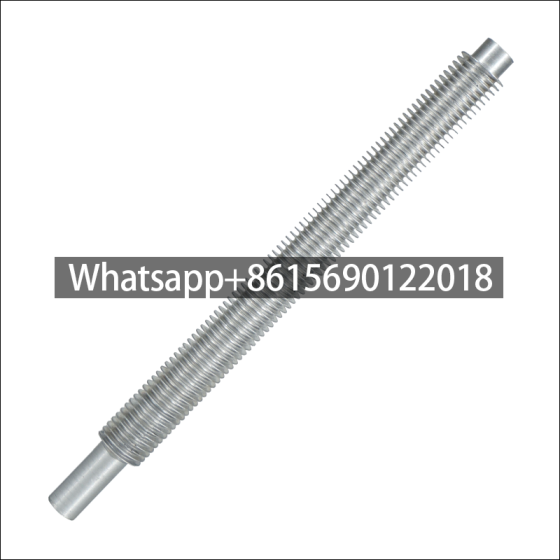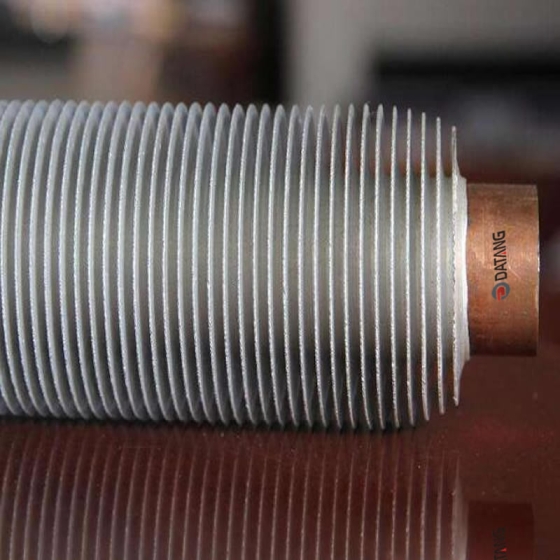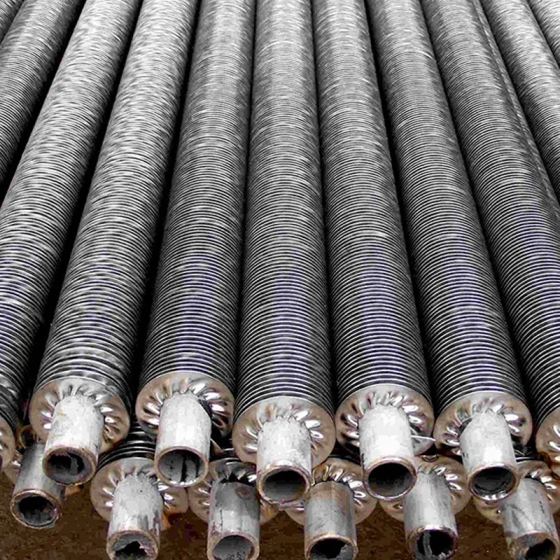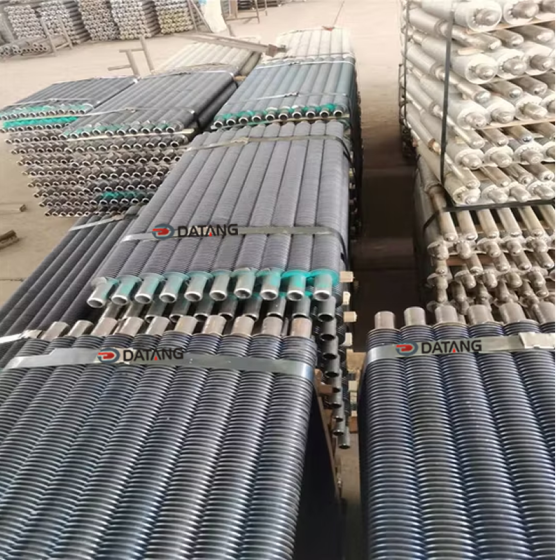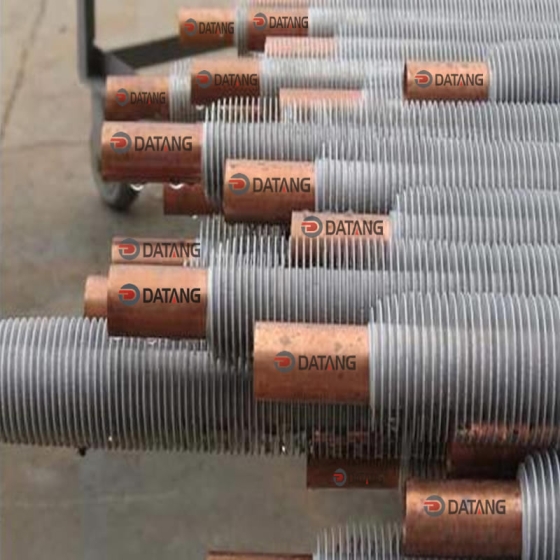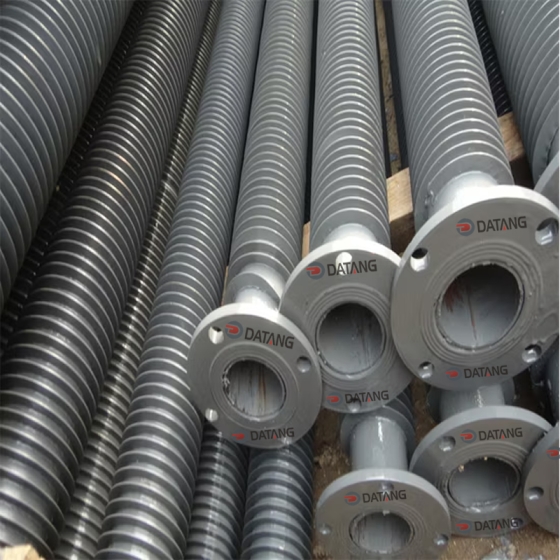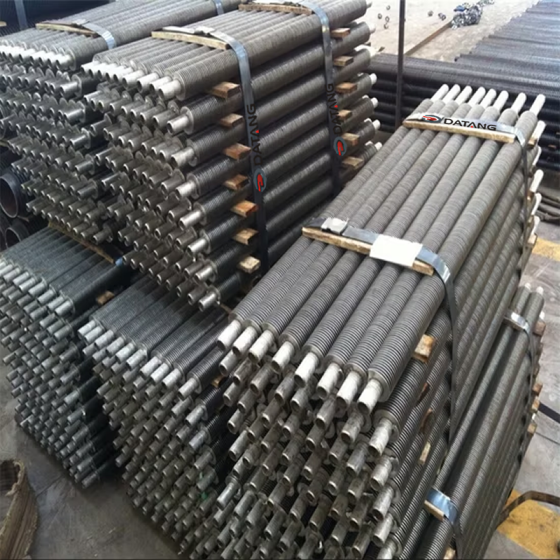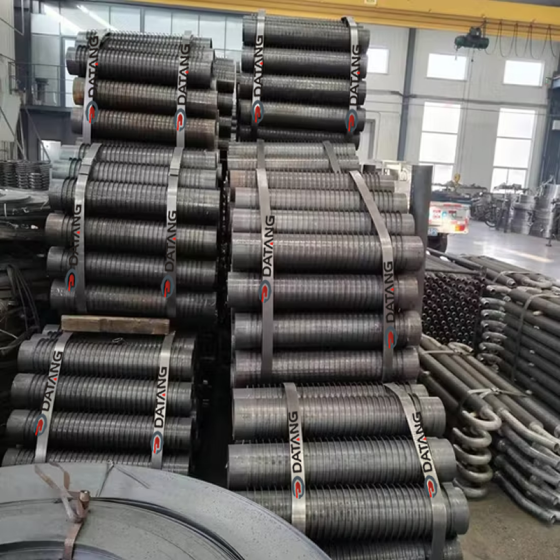What is an extruded fin tube?
Extruded fin tube is a bimetallic tube, whose outer aluminum material is processed into fins by cold plastic deformation.
Tube Material:Carbon Steel,Stainless Steel,Alloy Steel, Aluminum,Copper
Steel-aluminum composite fin tube
The processing technology of cold-rolled aluminum-steel fin tube is to first process aluminum tube and steel tube into bimetallic composite tube, and then mechanically cold-roll it into fins. Cold-rolled aluminum-steel fin tube uses the physical properties of aluminum tube, with steel tube as core material, and cold-rolled aluminum fins are formed as one-piece fin tubes. Widely used in steel, petroleum, chemical, machinery, shipbuilding, power station, hospital and food industries.
1. High heat transfer performance and low contact thermal resistance;
2. The contact area between fin and tube is large, and the connection is tight and reliable;
3. Good corrosion resistance and stable long-term performance;
4. The fin has good rigidity and is not easy to deform.
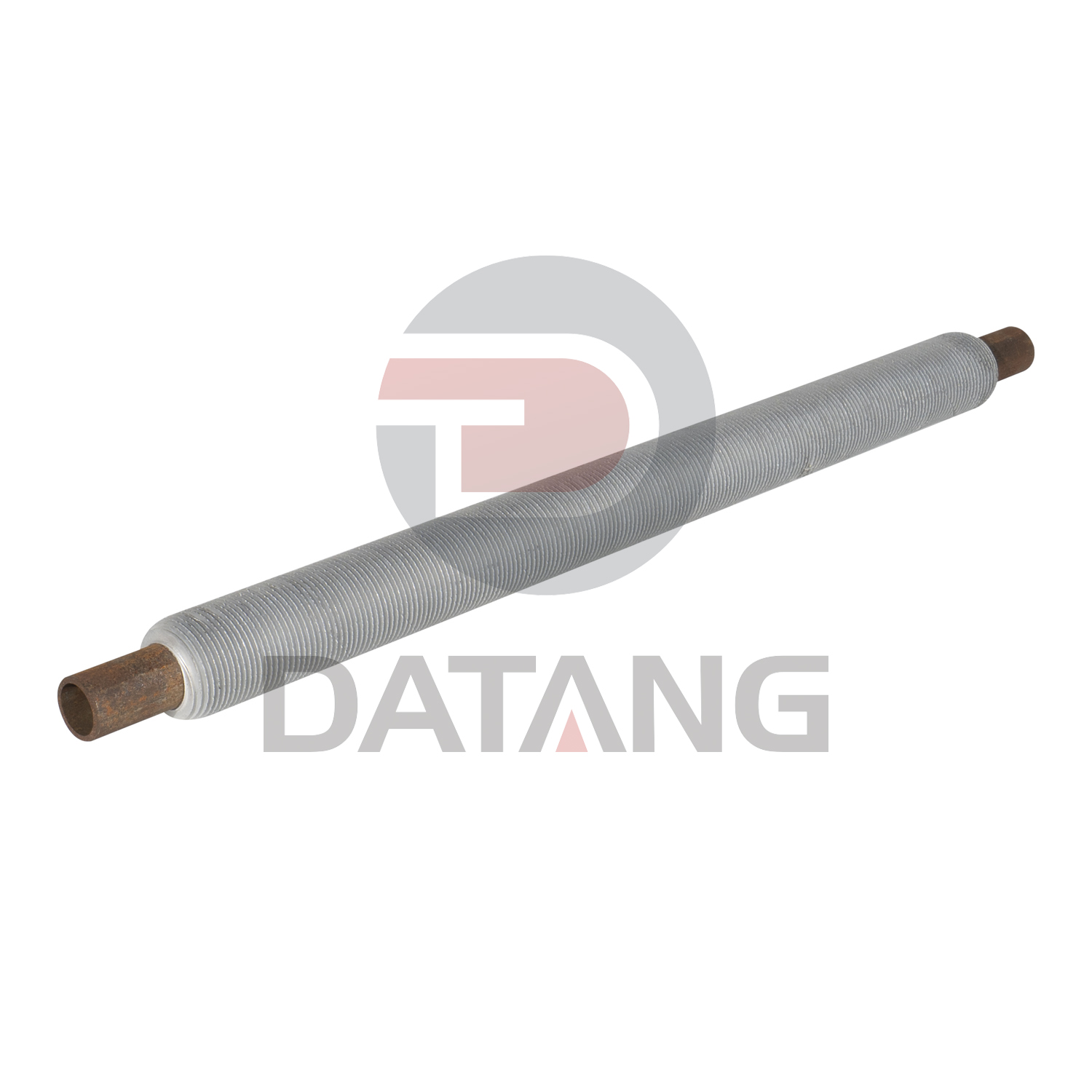
Copper-aluminum composite fin tube
Copper-aluminum composite fin tube is made of copper-aluminum composite tube after compounding. It has the characteristics of tight connection, small thermal resistance, good heat transfer performance, high strength, small flow loss, strong corrosion resistance, small deformation, long service life under long-term cold and hot conditions, 等. In the wet cooling of heating and air conditioning, the condensed water on the fin surface is easy to remove, and it is not easy to dust and scale in heat exchange occasions such as coaxial heating.
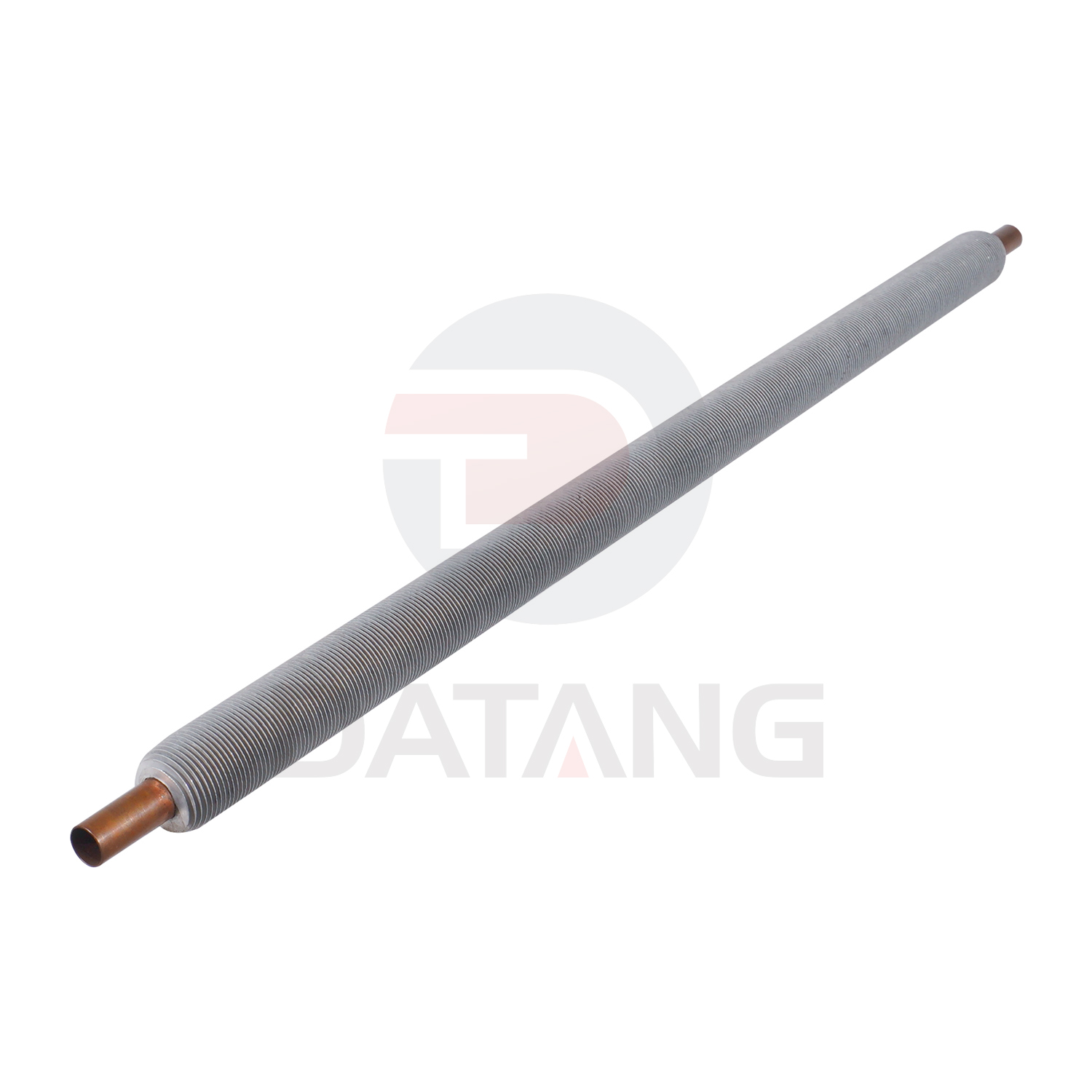
|
All dimensions are in Inches and specification upon your requests
|
|||
|
Tube OD
|
Fin Height
|
Fin Thickness
|
Fins per Pitch(Density)
|
|
5/8
|
3/8,1/2
|
.015/.016/ .020
|
4, 5, 6, 7, 8, 9, 10, 11, 12
|
|
3/4
|
3/8,1/2,5/8
|
.015/.016/ .020
|
4, 5, 6, 7, 8, 9, 10, 11, 12
|
|
1
|
3/8,1/2,5/8
|
.015/.016/ .020
|
4, 5, 6, 7, 8, 9, 10, 11
|
|
1 1/4
|
3/8,1/2,5/8
|
.015/.016/ .020
|
4, 5, 6, 7, 8, 9, 10,
|
|
1 1/2
|
3/8,1/2,5/8
|
.015/.016/ .020
|
4, 5, 6, 7, 8, 9, 10, 11
|
|
1 3/4
|
3/8,1/2,5/8
|
.015/.016/ .020
|
4, 5, 6, 7, 8, 9, 10
|
|
2
|
3/8,1/2,5/8
|
.015/.016/ .020
|
4, 5, 6, 7, 8, 9, 10
|

The processing technology of steel-aluminum Extruded Type Finned Tube is to first process aluminum tube and steel tube into
bimetallic composite tube, and then form fins after mechanical cold rolling. The aluminum fins are tightly combined into a
bimetallic tube finned tube (composite extruded finned tube)Steel-aluminum rolled finned tubes are integrally rolled from aluminum tubes, and have the characteristics of no contact thermal
resistance, high strength, thermal shock resistance and mechanical shock resistance, good thermal performance, and a considerable
expansion heat transfer surface. This finned tube heat exchanger is in front of the tube or around the plate.Steel-Aluminum Extruded Type Finned Tube Quick Details:
Core tube material:
1. Carbon steel: A179, A192, SA210 Gr A1/C, A106 Gr B
2. Stainless steel: TP304/304L, TP316/TP316L/316Ti, A789 S31803/S2205
3. Copper: UNS12200/UNS14200/UNS70600, CuNi70/30, CuNi 90/10
Fin material:
1. Aluminum (Alu.1100, Alu.1060)
2. Copper.Fin type: Solid plain
Fin Tube Type: G Type Embedded
Outer diameter (OD): 16mm Min~50.8mm max.
Tube length: up to 18,000 mm.
Fin height: 16.5mm max.
Fin thickness: generally 0.4mm~0.6mm
Fin pitch: 2.1mm minimum (12FPI)
Surface Protection: Both bare ends shall be zinc or aluminum metallized by electrospray arc system coating.
Accessories: Tube support boxes, clamps or spacer boxes (materials: aluminium, zinc and stainless steel).Additional Info
Payment Terms:T/T, LC
Delivery: 15-30 days after payment
Marking: Standard + Steel Grade + Size + Heat No + Lot No
Package: Iron frame packing boxes and the desiccants are put into each package for continental transportation as well. or as
必須Manufacturing Process:
The processing technology of steel-aluminum cold-rolled finned tube is firstly processed from aluminum tube and steel tube into
bimetallic composite tube, and then mechanically cold-rolled to form fins. Using the physical properties of the aluminum tube, a
finned tube in which the tube with the steel tube as the core and the cold-rolled aluminum fins are tightly integrated is made.
Fin Type:
Fins are solid flat or serrated into 12, 16 or 24 segments or according to your design.
Finless part
Both end with appr. 10mm~50mm, there is a gap in the middle (no fin part).
Steel-Aluminum Extruded Type Finned Tube with two different materials
Core tube material: carbon steel, low alloy steel, stainless steel, brass, 銅, copper-nickel alloy, aluminum bronze, nickel
alloy.
|
Core Tube Material
|
|
|
Carbon Steel Tubes
|
A179, A192, SA210 Gr A1/C, A106 Gr B, A333 Gr3 Gr6 Gr8, A334 Gr3 Gr6 Gr8, 09CrCuSb, DIN 17175 St35.8 St45.8, EN 10216 P195 P235
P265, GB/T3087 Gr10 Gr20, GB/T5310 20G 20MnG, |
|
Alloy Steel Tubes
|
A209 T1 T1a,A213 T2 T5 T9 T11 T12 T22 T91,A335 P2 P5 P9 P11 P12 P22 P91,EN 10216-2 13CrMo4-5 10CrMo9-10 15NiCuMoNb5-6-4
|
|
Stainless Steel Tubes
|
TP304/304L, TP316/TP316L TP310/310S TP347/TP347H
|
|
Copper Tubes
|
UNS12200/UNS14200/UNS70600, CuNi70/30, CuNi 90/10
|
|
Titanium Tubes
|
B338 Gr 2
|
Fin tubes offer several key advantages in thermal applications, primarily due to their structural design and functional efficiency:
-
Enhanced Heat Transfer Efficiency
The extended surface area of fins significantly improves heat exchange performance in forced convection systems, making them ideal for applications like waste heat recovery and refrigeration evaporators. -
Sturdy Manufacturing Techniques
Advanced methods like non-chip cutting-press compound shaping ensure precise fabrication while minimizing material waste. -
Versatility in Applications
Widely used across industries including HVAC, automotive HVAC systems, and industrial heat exchangers due to adaptable designs for specific thermal requirements. -
Optimal Structural Design
Genetic algorithm-based optimization enables customized configurations (e.g., spiral corrugated patterns) to balance thermal performance and pressure resistance.
For specific engineering contexts, further customization can integrate metal wall-catalytic layer combinations or specialized alloy materials
 dtfinnedtube.com
dtfinnedtube.com

